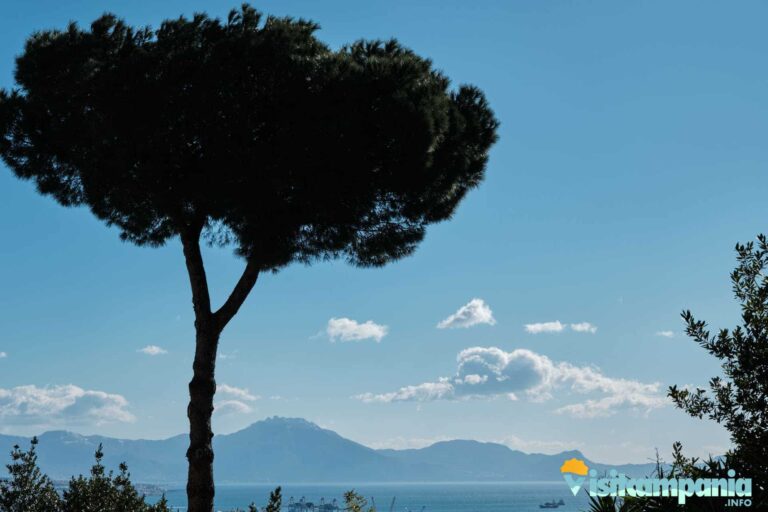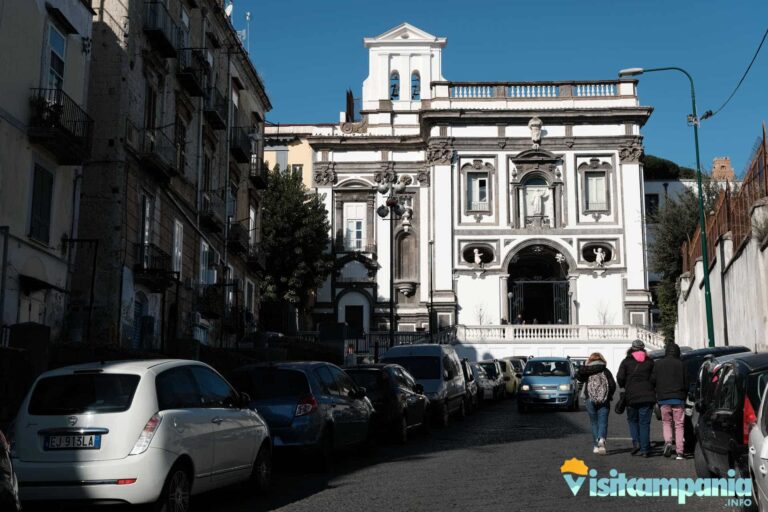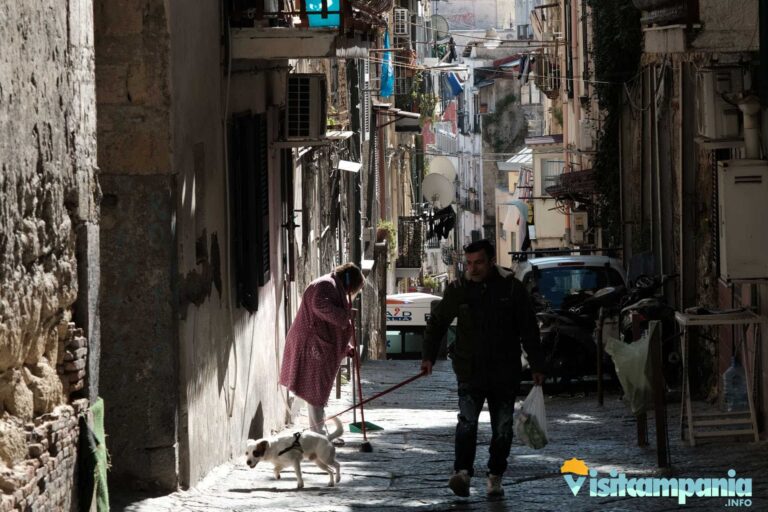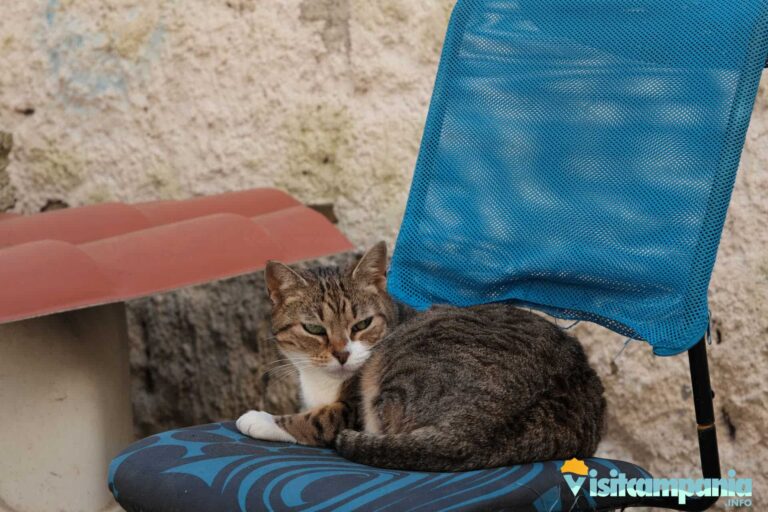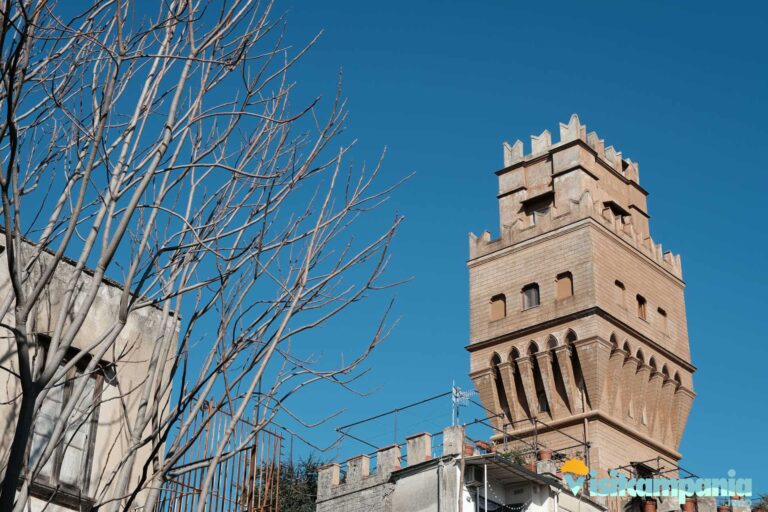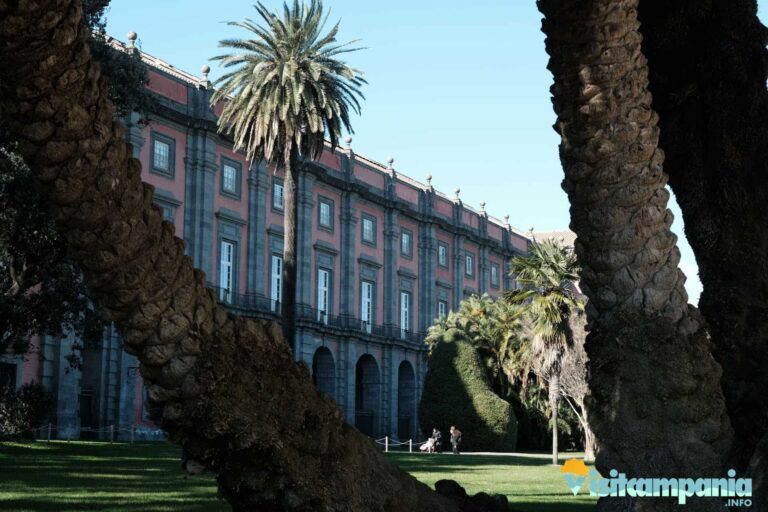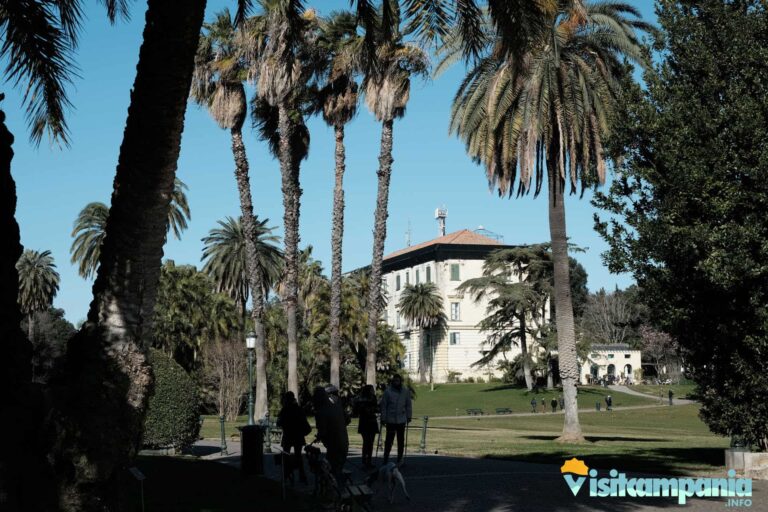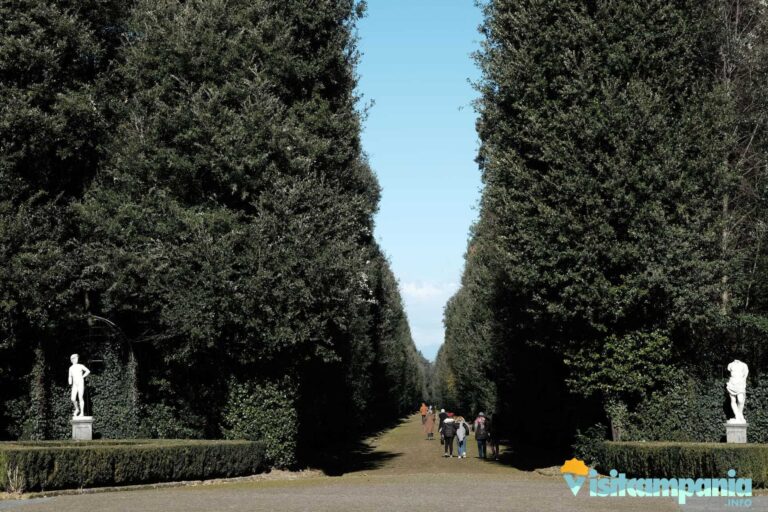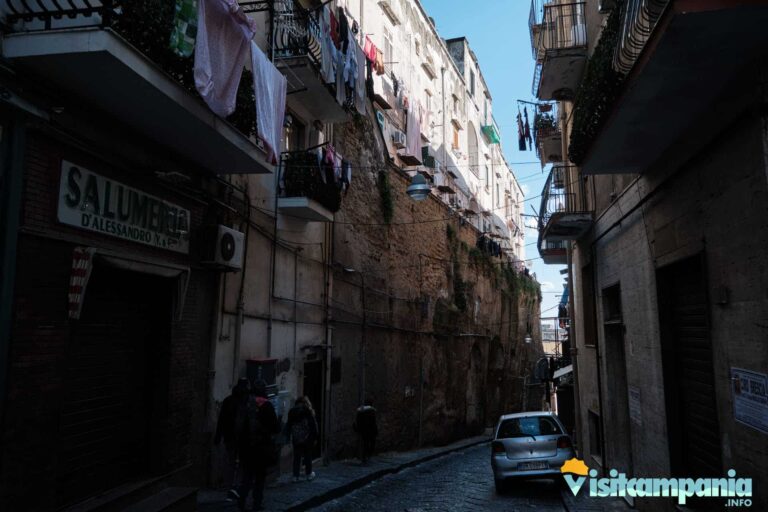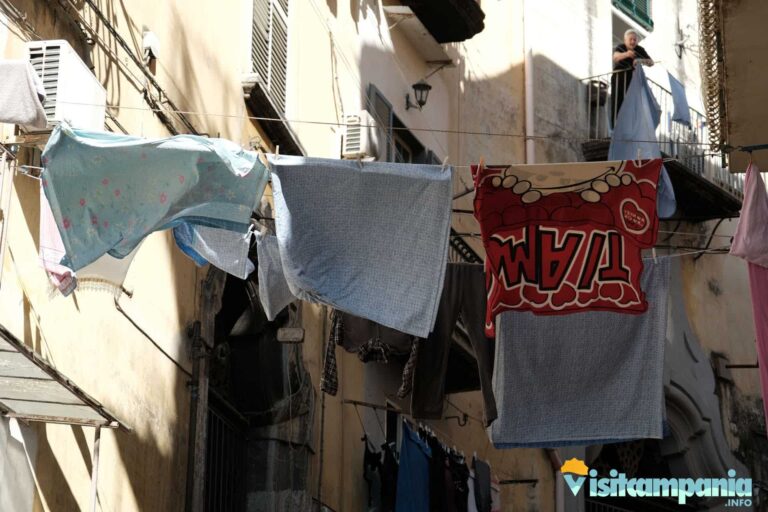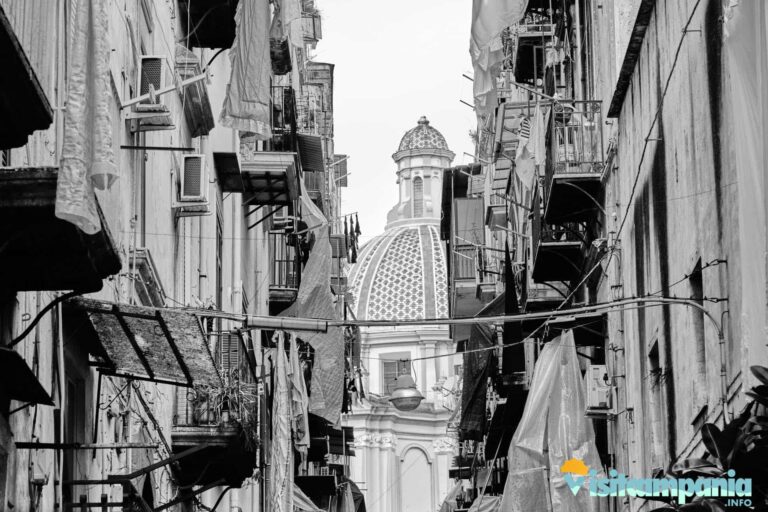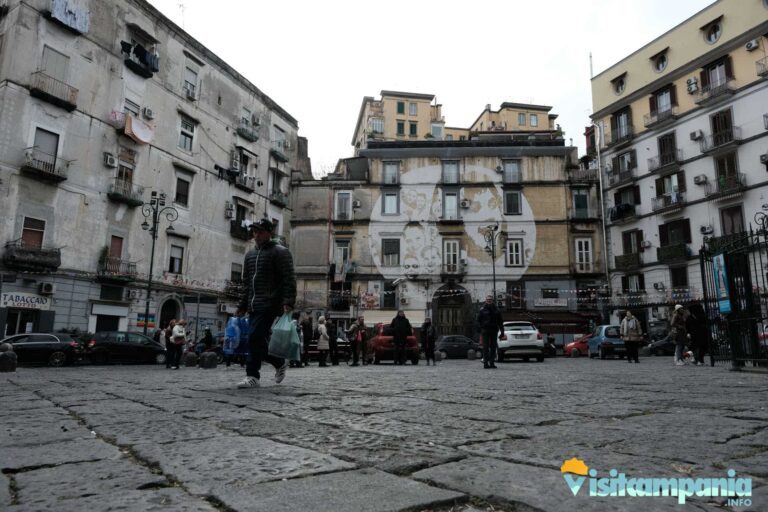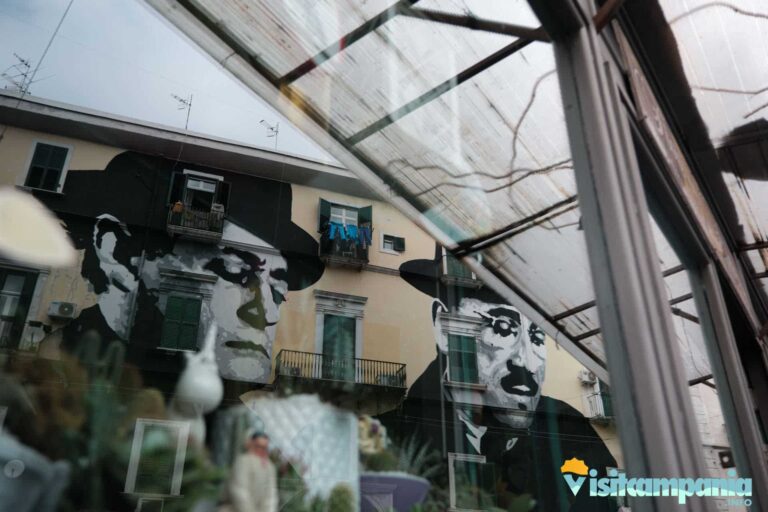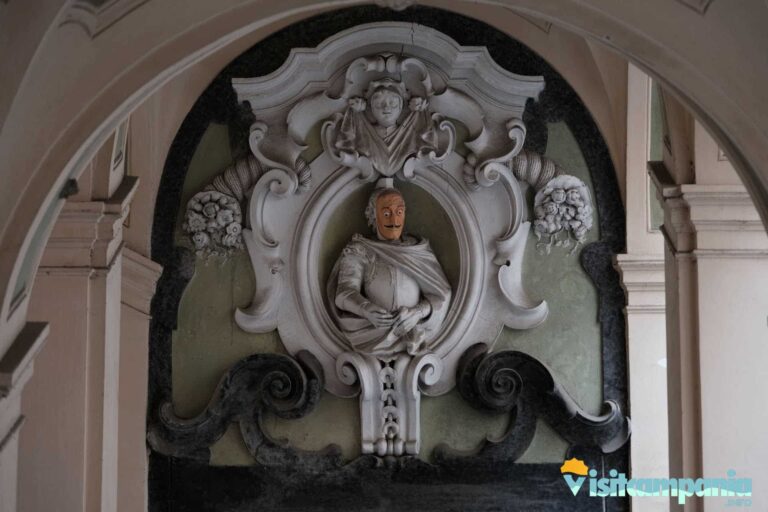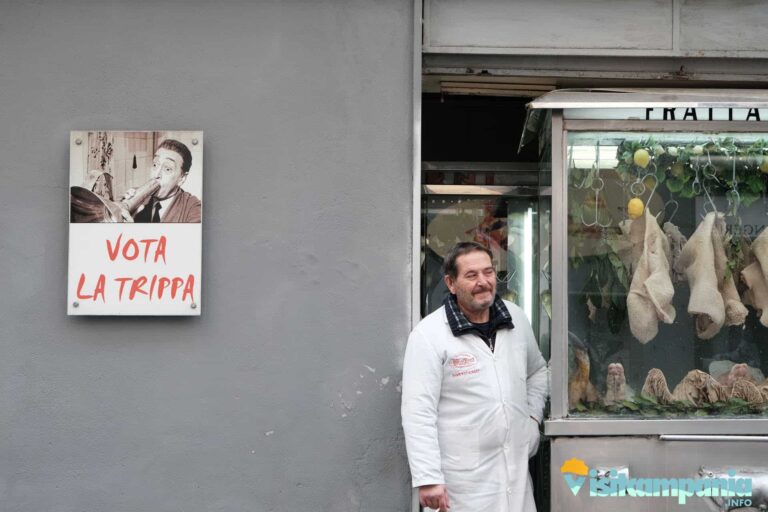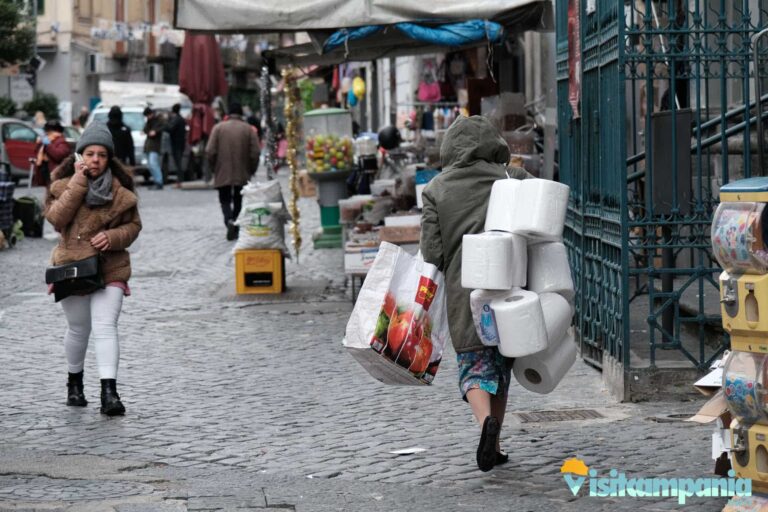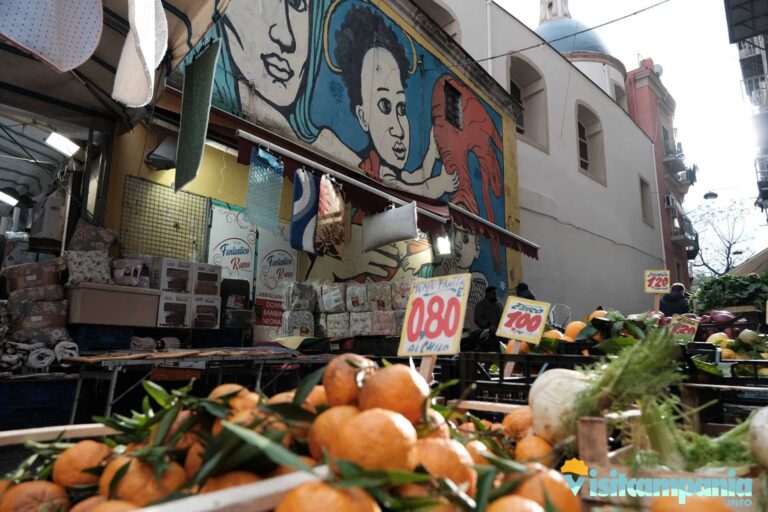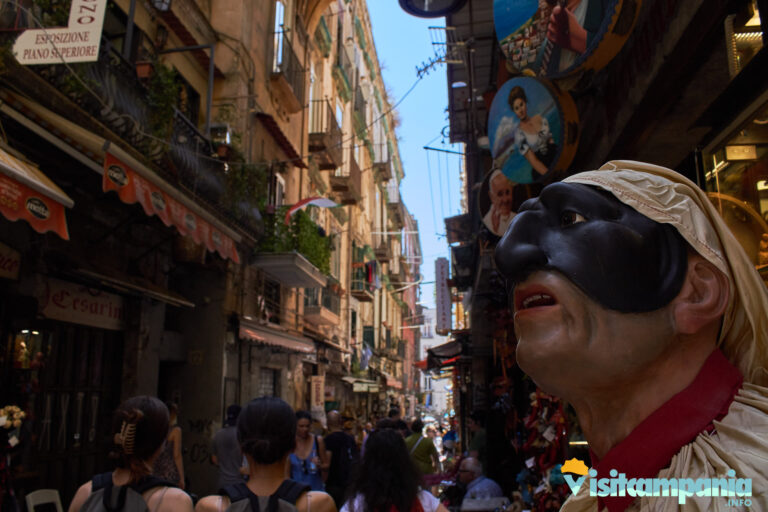From Piazza Carlo III to the ascent of Moiariello
This urban trekking route, which from the lower part of Naples leads us to the hill of Capodimonte along the climb of Moiariello, allows us to discover several hidden treasures of Naples. The first we meet right in Piazza Carlo III, the starting point of our excursion, and is the Real Albergo dei Poveri. Commissioned by King Charles III of Bourbon to provide assistance to the many poor of the kingdom, the imposing structure now houses some associations. Although verse in a state of substantial abandonment is, however, one of the many testimonies of the greatness of the Enlightenment and Bourbon Naples.
Let’s walk along Via Foria and, immediately after the Real Albergo, we meet the Botanical Garden. Initially commissioned by Ferdinand IV of Bourbon but built by Joseph Bonaparte, the Botanical Garden is now a research center of the University of Naples Federico II. It is often the scene of events and with its 12 hectares of extension and 9,000 plant species, including some carnivorous plants, it is certainly worth a visit.
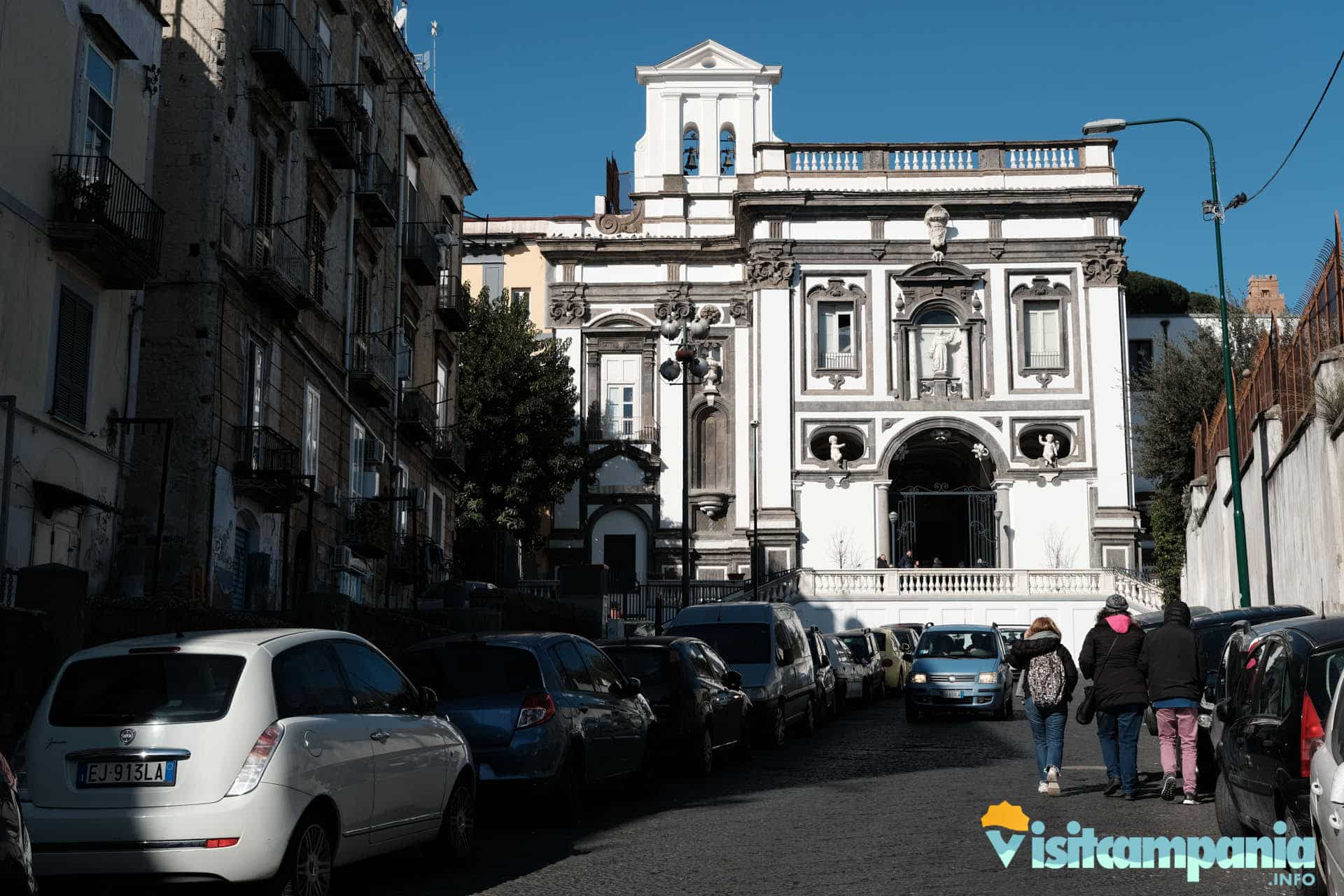
Immediately after the Garden turn right onto Via Michele Tenore and begin the ascent towards Capodimonte. At the end of the street you can already see the splendid baroque façade of the church of Santa Maria degli Angeli alle Croci.
Once we reach the church, turn left onto Via Federico Delpino entering that vivid and evocative neighborhood that is the Sanità and continue straight until we cross, on the right, the steps that mark the beginning of the Montagnola climb.
The ascent of Moiariello to the Real Bosco di Capodimonte
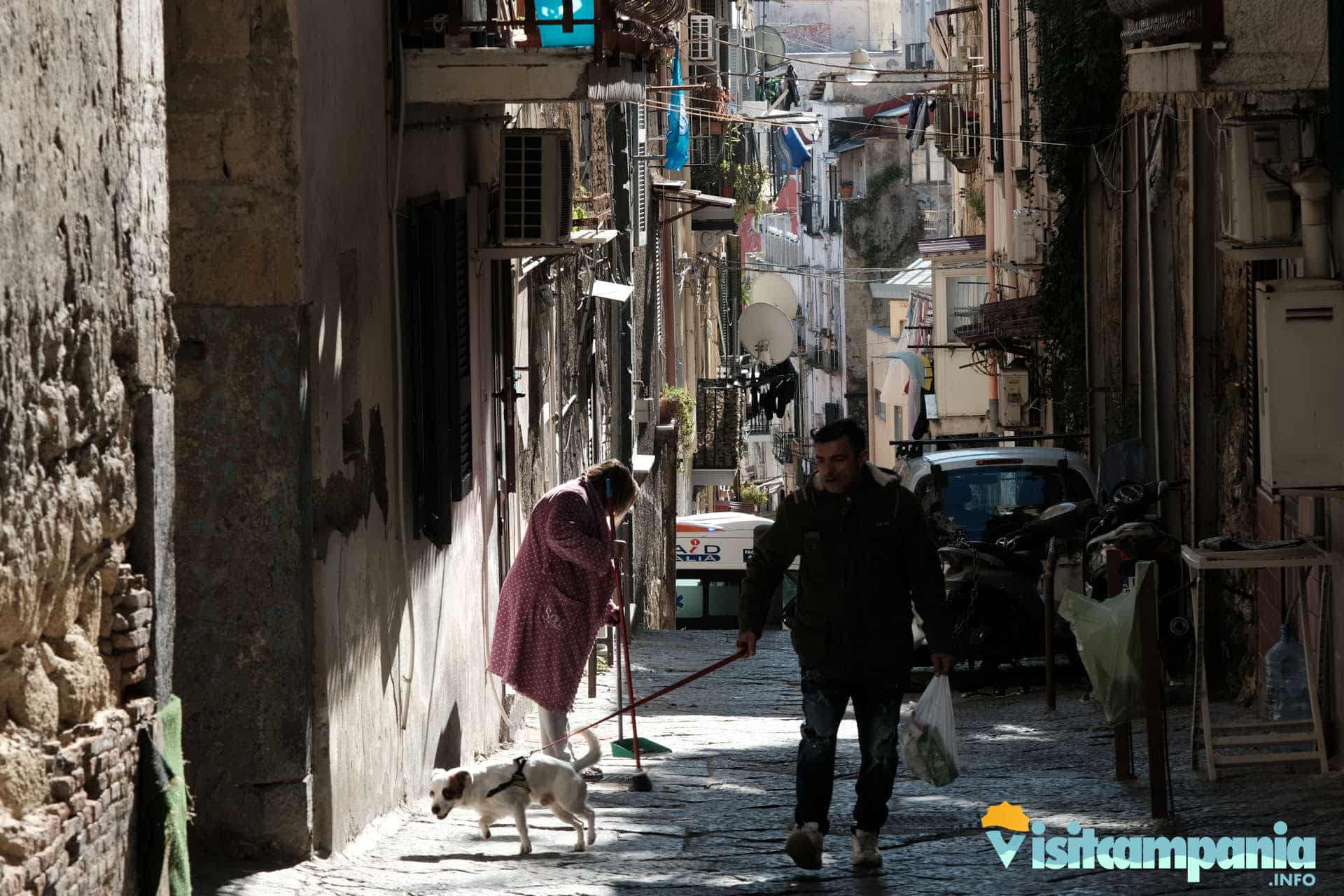
Turning on Salita Montagnola we resume the ascent between the houses and alleys of the neighborhood. After the right bend at the end of the road begins climb Moiariello proper. First it is still paved road then the stairs begin, wide and interspersed with paved sections.
At the top of the climb the asphalt section resumes. This is the point to enjoy a splendid view of the Gulf of Naples with the Lattari mountains and the Sorrento peninsula in the distance. But this is also the point where different places of interest crowd.
Right where the stairs end, in fact, is the church of Santa Maria delle Grazie al Moiariello, built in 1741 and now home to the Commandery Ex val Vesuvio of the Catholic Templar Association of Italy which oversaw the restructuring and opening to worship after years of neglect.
Looking up, then, the tower of Palasciano appears in its grandeur, part of a larger palace. Built in the nineteenth century, it recalls the Palazzo della Signoria in Florence and today houses a B & B in addition, it is said, to the ghost of Ferdinando Palasciano, the original owner of the tower.
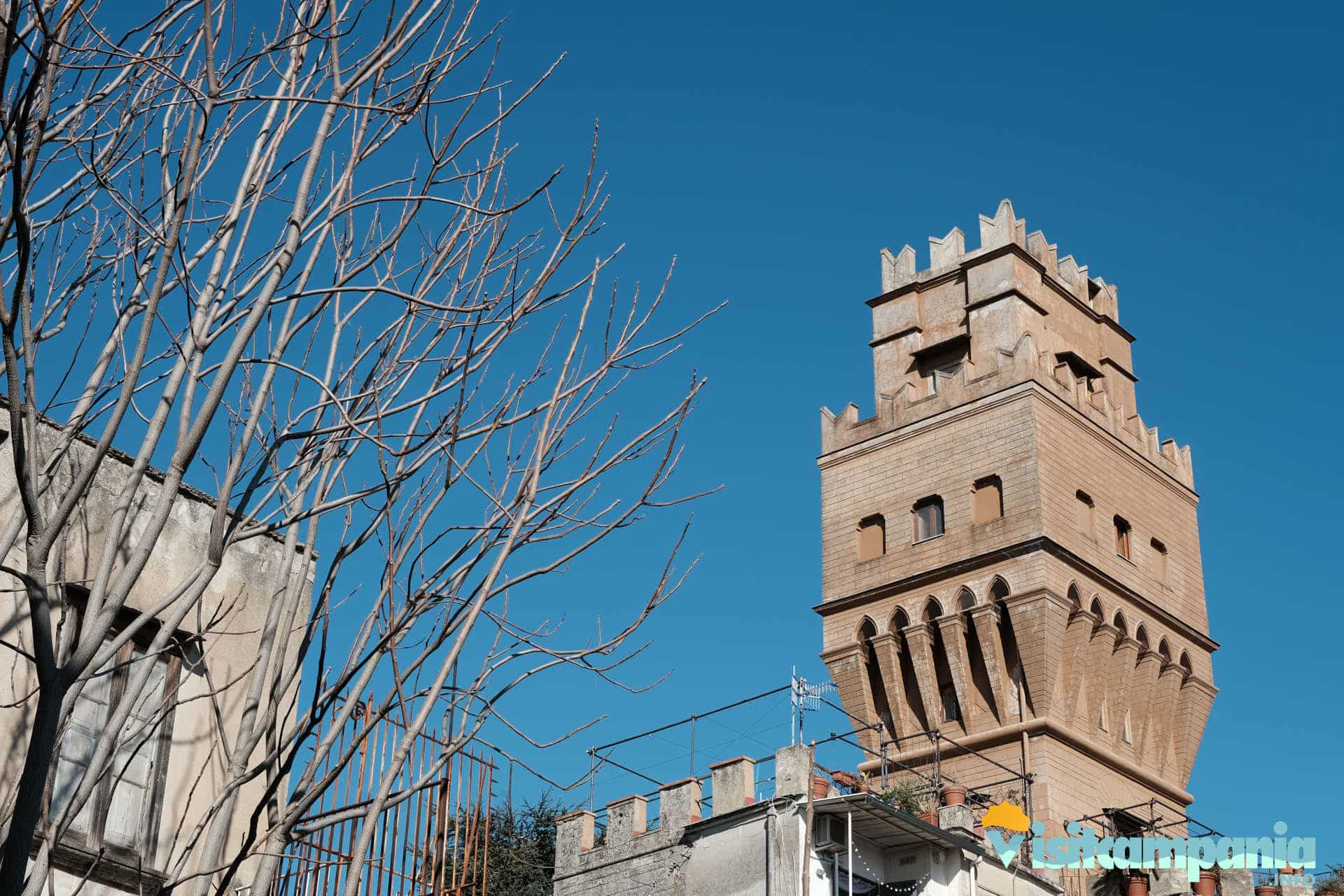
Finally, on the left is the Astronomical Observatory of Capodimonte. Built by Gioacchino Murat in 1819, the Observatory is a scientific structure of the National Institute of Astrophysics and often organizes events with the possibility of visiting even for non-experts.
We resume, then, the path always on climb Moiariello until we reach the nearby Real Bosco di Capodimonte which we access from what is called Porta Grande.
Let’s immerse ourselves in the nature of the Bosco di Capodimonte
Getting to the Real Bosco di Capodimonte, after covering almost 2 and a half km, the Salita del Moiariello and 165 meters in altitude, is an exciting and relaxing experience. The forest, located on the hill of Capodimonte, is an oasis of peace and greenery in the middle of the city of Naples and, although it is a monumental park of considerable historical and artistic importance, it is a public park accessible for free even with dogs on a leash.
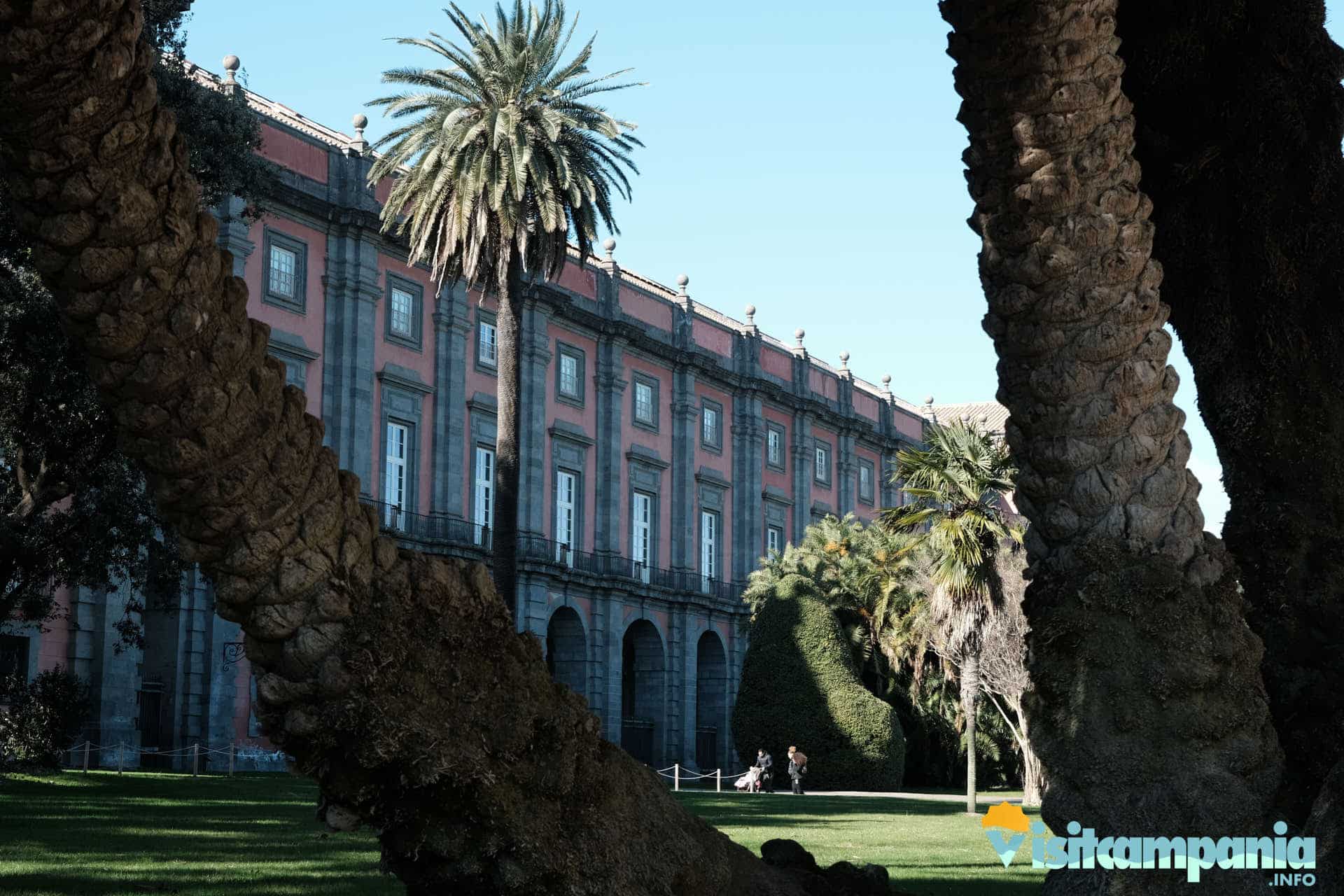
Of Bourbon origin as the adjoining Royal Palace now a museum, it covers an area of about 134 hectares and houses 17 buildings including laboratories, residences and churches as well as fountains, vegetable gardens and orchards. In 2014 it was elected the most beautiful park in Italy.
It is therefore an ideal place to relax walking in the green, getting pleasantly lost in the avenues that run through it. There are also two picnic areas where you can refresh and rest.
With these premises I invite you, therefore, to go beyond the GPS track of the recorded route and to enjoy this authentic green jewel at will.
Once the exploration of the Real Bosco di Capodimonte is completed, we return to the Porta Grande and resume our urban trekking.
On the way back we discover the hidden treasures of the Sanità district
We start the way back retracing backwards, for a few meters, climb Moiariello until we meet climb Capodimonte on our right. We take it and begin the descent entering the Sanità district.
Until a few years ago the neighborhood, which gave birth to Totò, was quite degraded and dangerous. Today, although the problems are not all solved, a work of social redevelopment is underway, before urban planning, carried out by the inhabitants of the neighborhood thanks to which the Sanità has opened its incomparable jewels to the many tourists who begin to crowd it. Even if we do not touch them in this urban trekking route, it is right to mention the Catacombs of San Gennaro, the Catacombs of San Gaudioso and the Fontanelle Cemetery as places not to be missed.
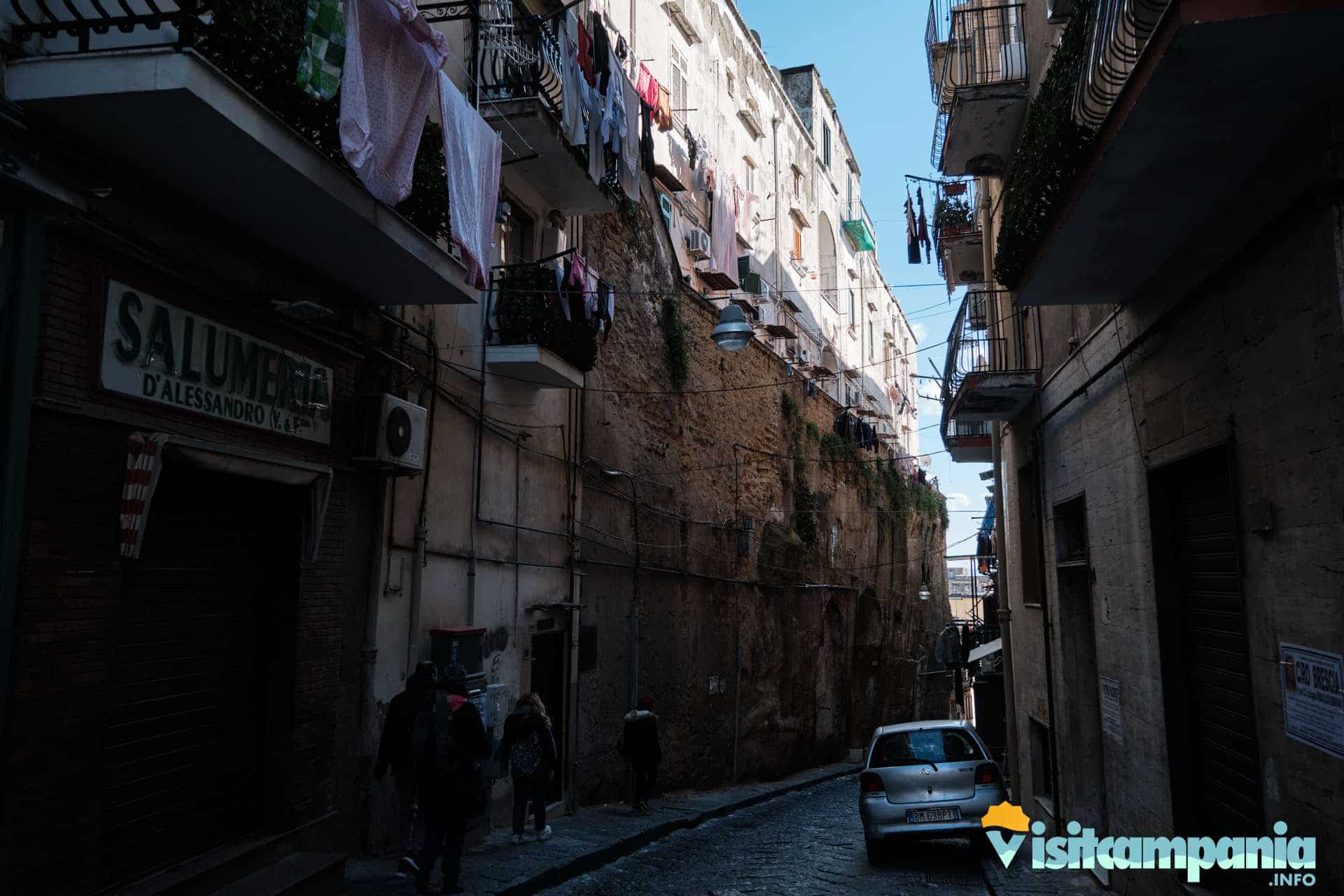
As we descend, we pay attention to the amazing buildings built on spurs of living tuff that we meet about halfway down the descent.
After the descent we turn slightly right into Via San Severo in Capodimonte and let ourselves be guided by the majolica dome of the Basilica of Santa Maria della Sanità that already peeps through the narrow alleys. A few more steps and here we are in Piazza Sanità where the Basilica overlooks.
Of Baroque style, it houses precious paintings by Luca Giordano and Andrea Vaccaro among others, a spectacular presbytery raised and connected by a fine marble pincer staircase and the crypt already an early Christian basilica. From the crypt you can then access the Catacombs of San Gaudioso. From 2021 the Basilica also hosts the Fabulous Nativity Scene, a monumental work created by the Scuotto brothers, Neapolitan crib masters of the La Scarabattola workshop, with the collaboration of the crib set designer Biagio Rossigno. There is a special visit to be dedicated.
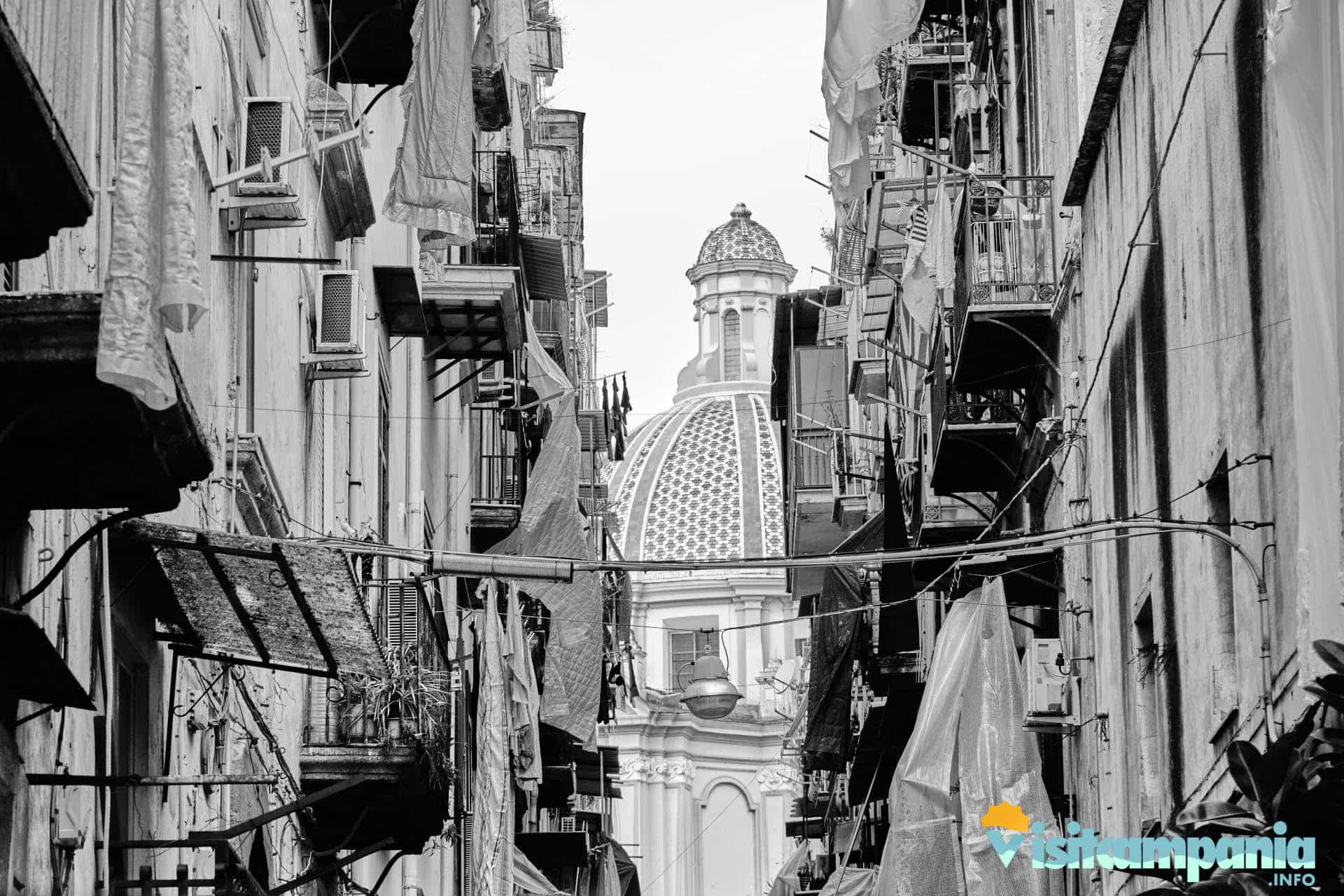
Towards the Virgins and Porta San Gennaro
From Piazza Sanità turn left onto Via Sanità and head towards the end of the urban trekking of Moiariello. We are always attentive, however, to what surrounds us because this last kilometer that separates us from Porta San Gennaro is an authentic treasure chest of hidden wonders. In short, we must raise our eyes on the buildings among which we walk or peep into the doors to come across pleasant surprises So, already here in Piazza Sanità dominates the Luce mural by artist Tono Cruz and, after a few steps on Via Sanità, are Totò and Peppino to stand out on the façade of another building.
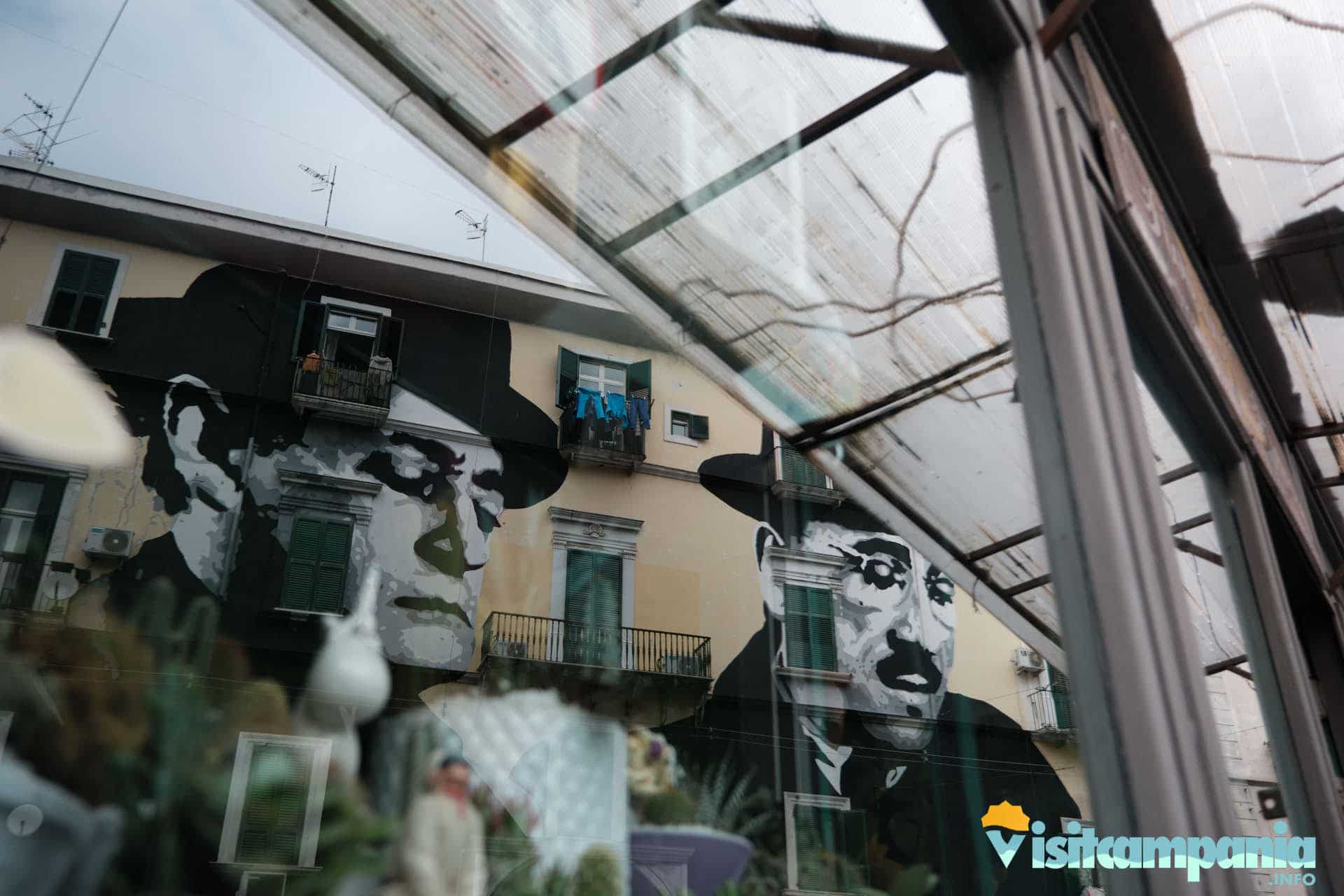
Going down, then, we meet the baroque Palazzo Sanfelice, set of many films and TV series including These Ghosts! and Mina Settembre. Finally, now in Via Vergini, is the palace of Spagnuolo also baroque.
We have thus reached the end of our urban trekking of Moiariello And I hope that this path has left you, like me, the crazy desire to return soon to these places to visit more carefully the many jewels that today we have just touched and, in some cases, discovered for the first time.
Beyond Palazzo dello Spagnuolo we keep slightly to the right and take Via Fuori Porta San Gennaro. A few steps and here we are again on Via Foria right at Porta San Gennaro, the oldest in the city and access to Greek-Roman Naples . Piazza Carlo III, from which we started, is about a mile and a half continuing to our left always on Via Foria.

